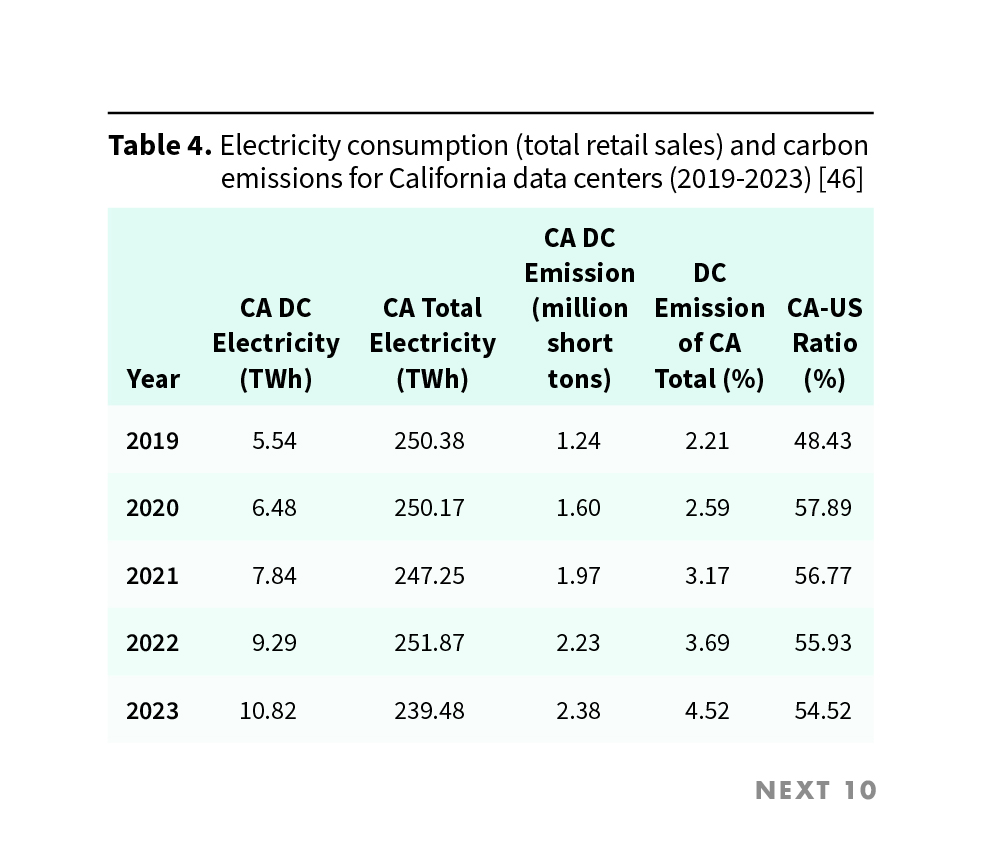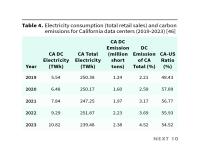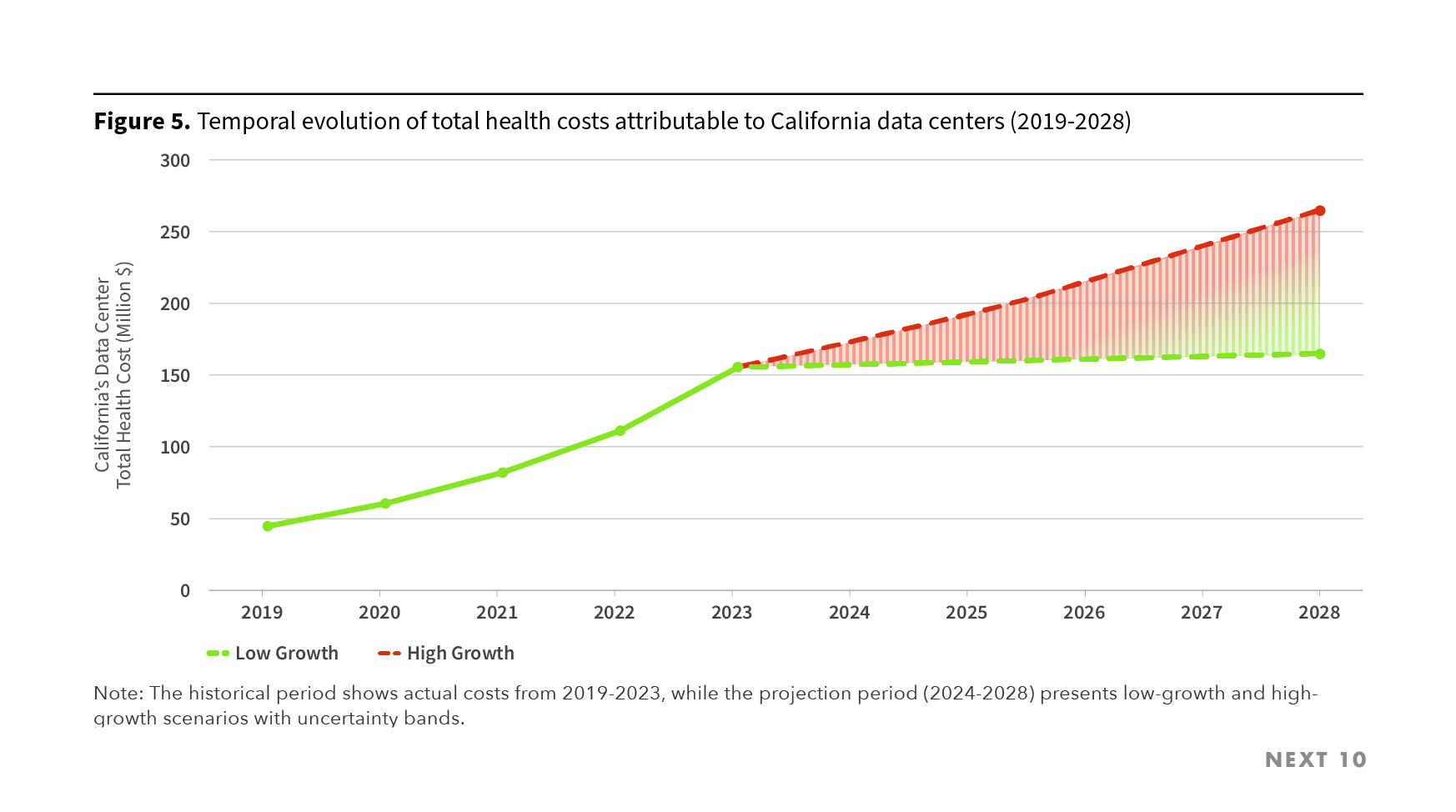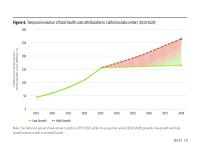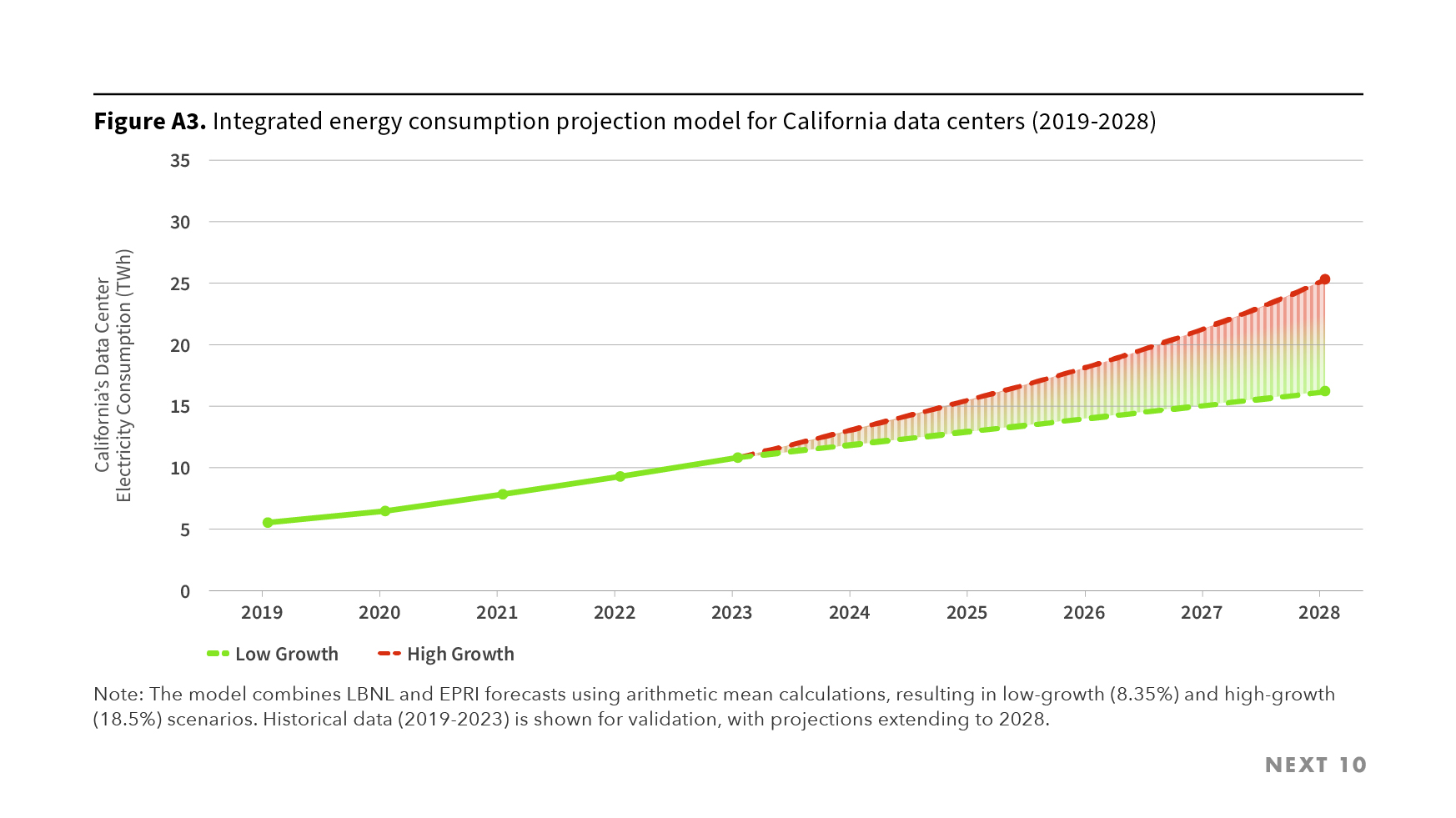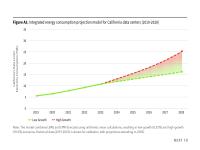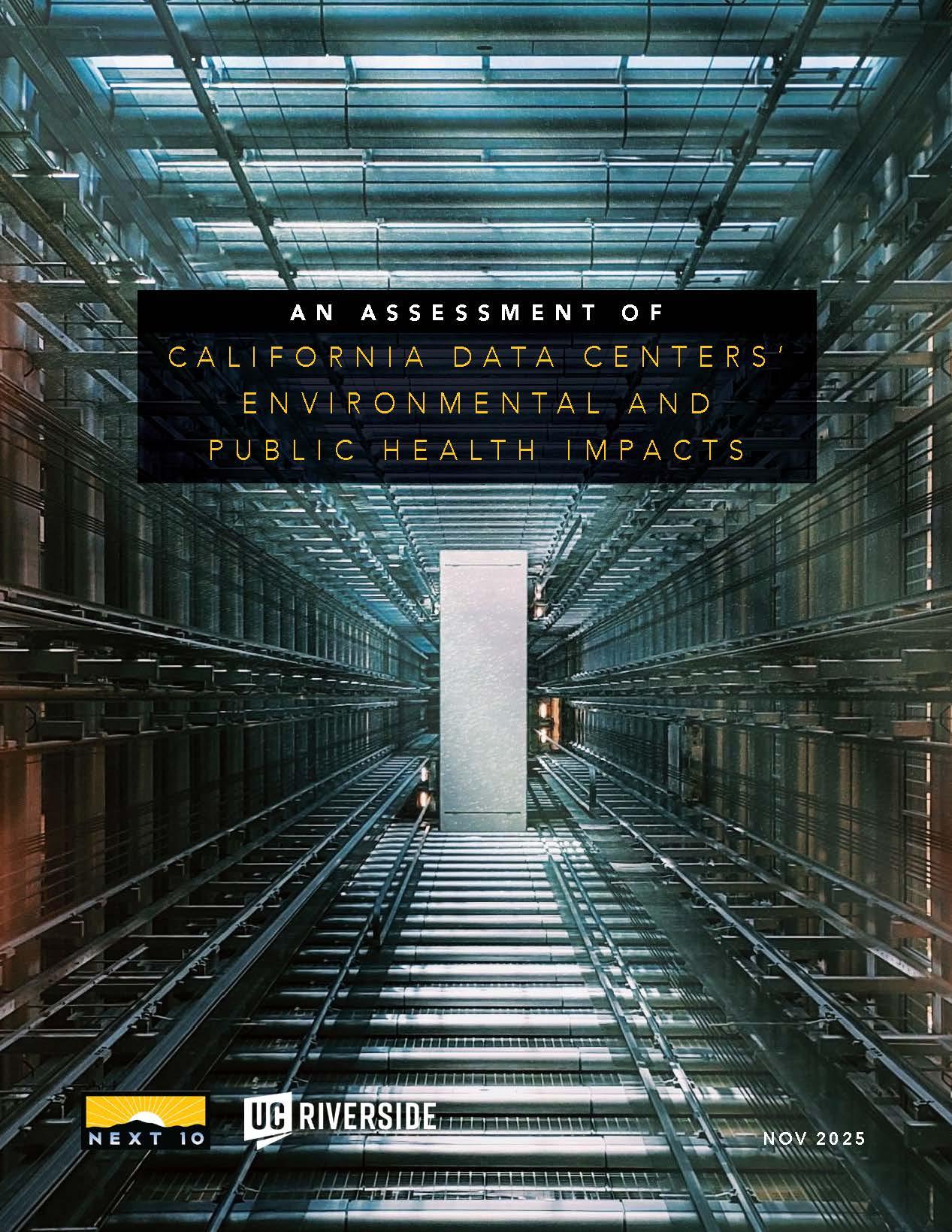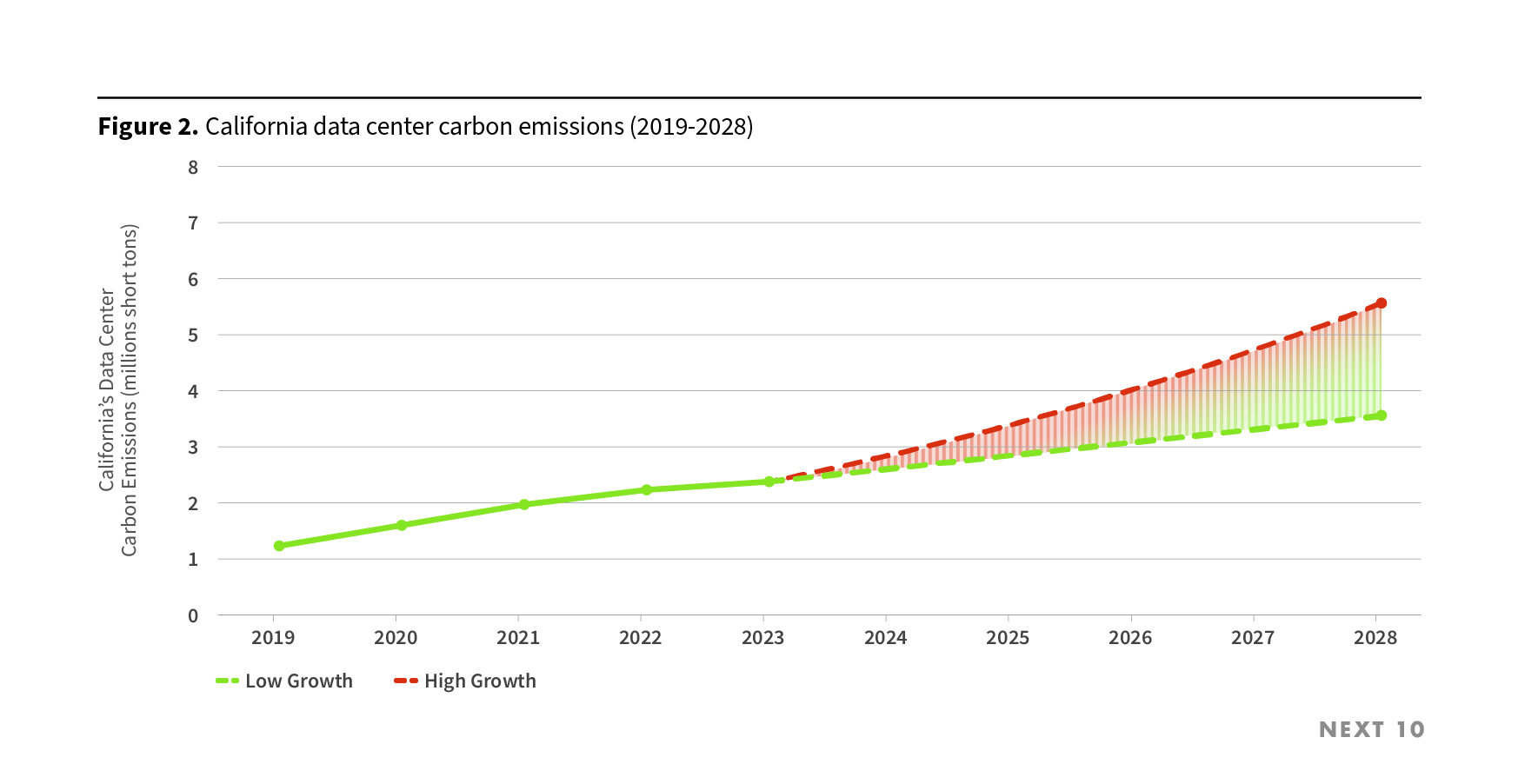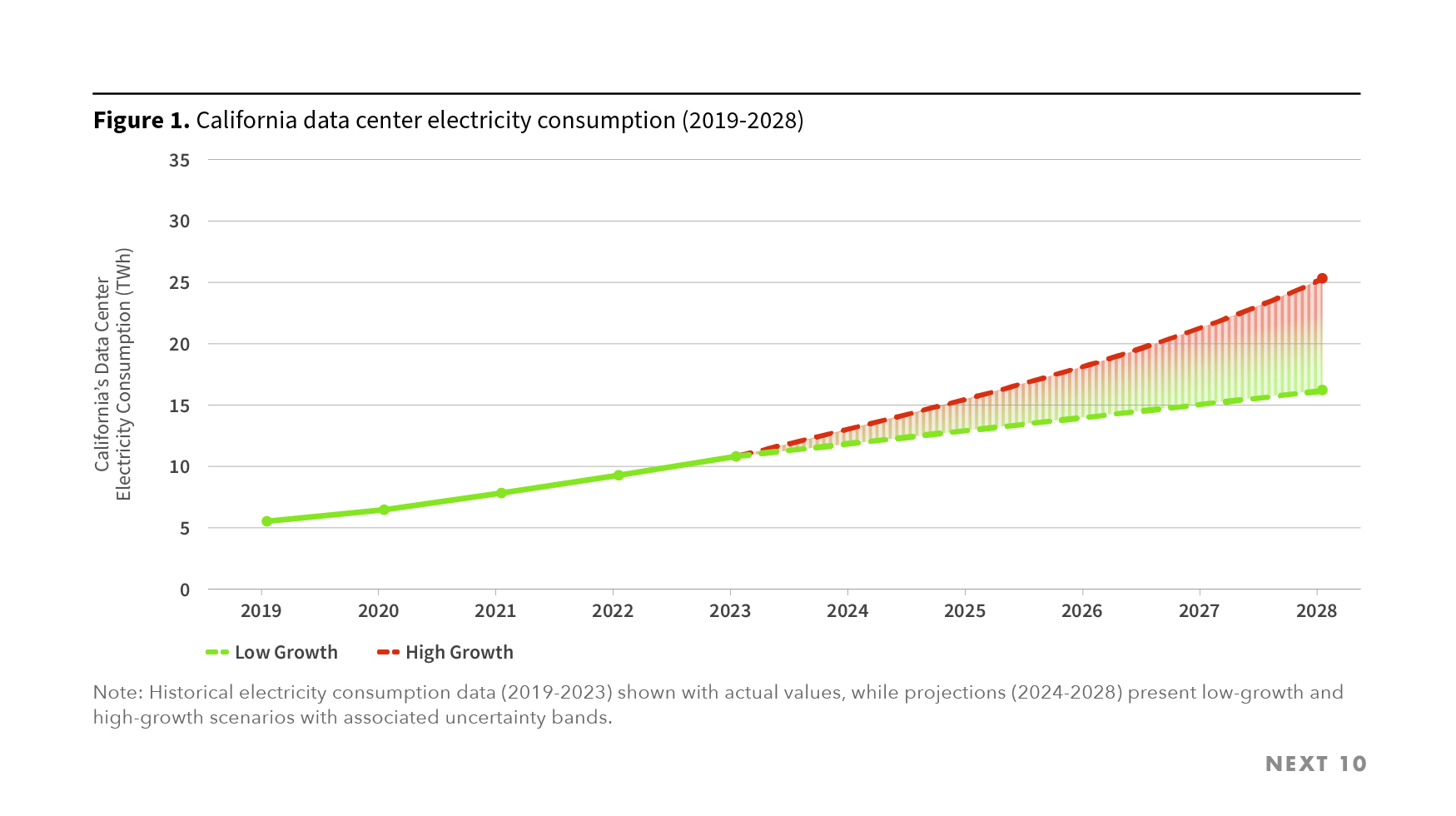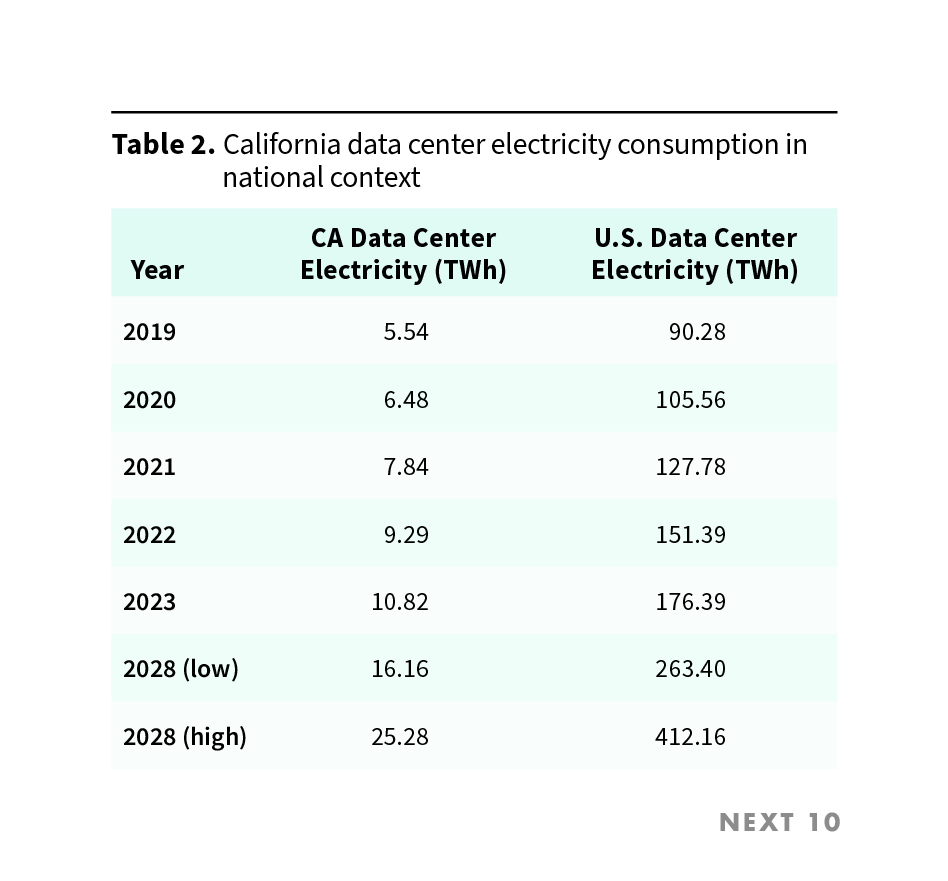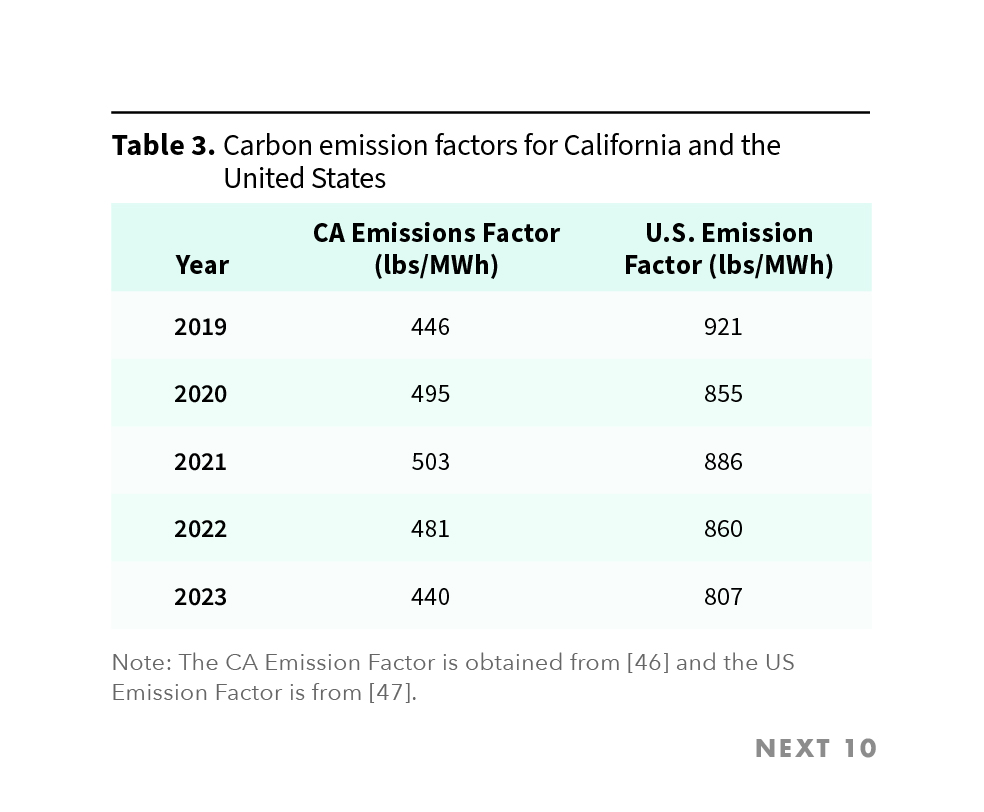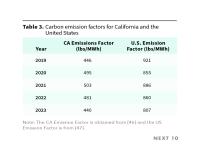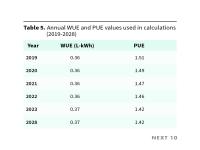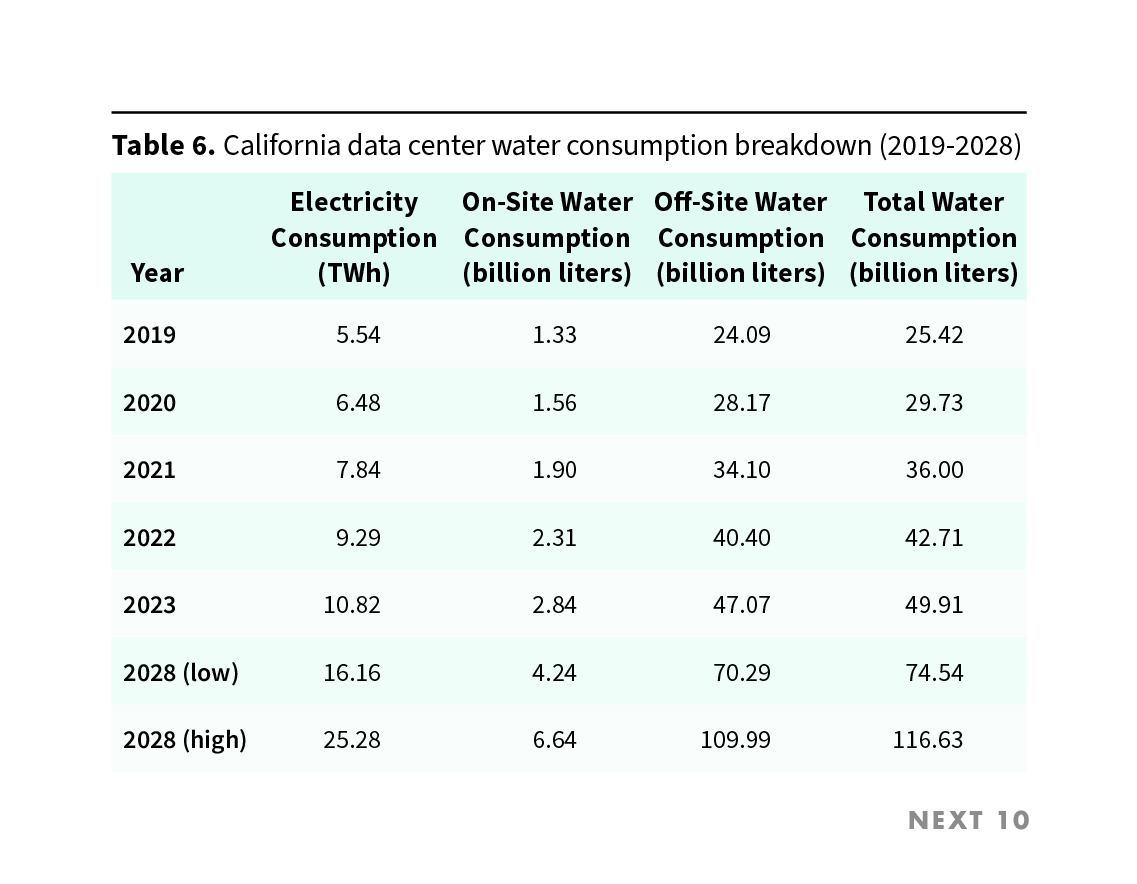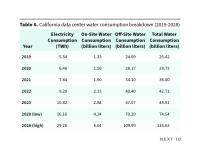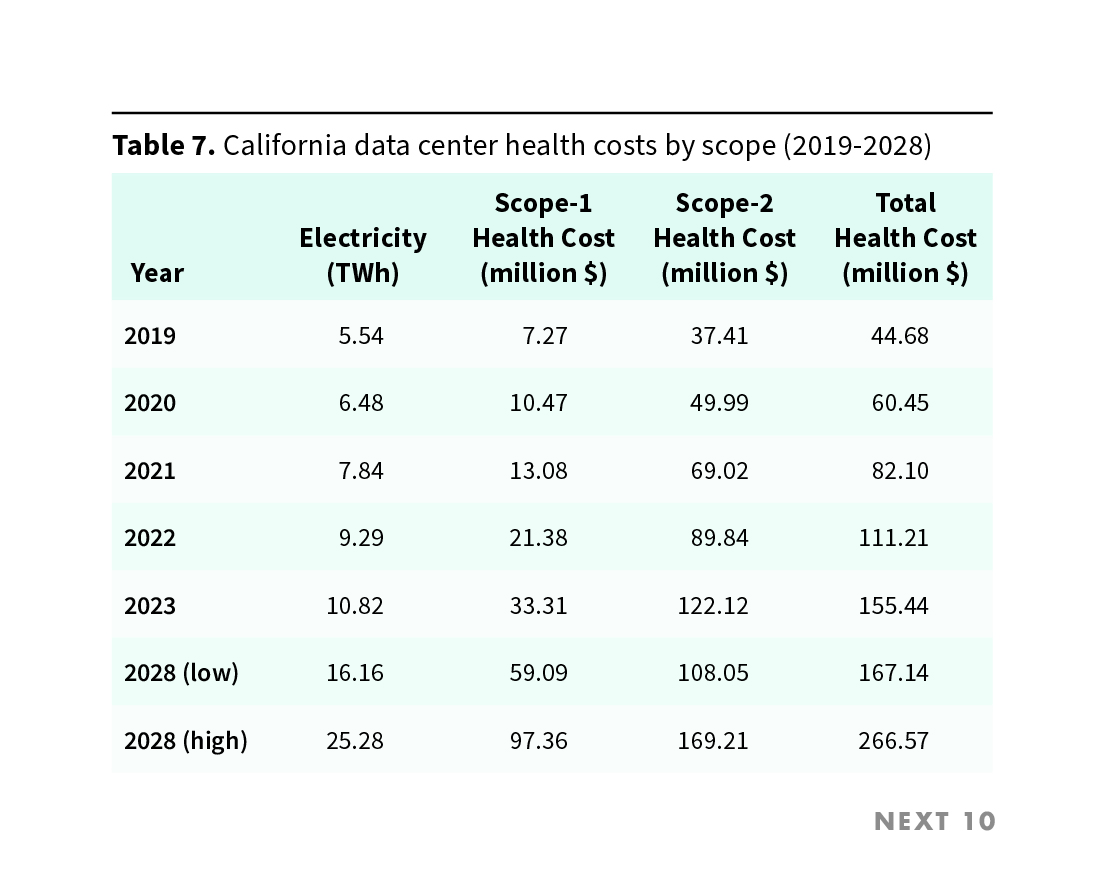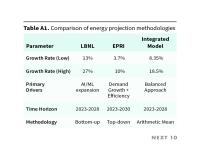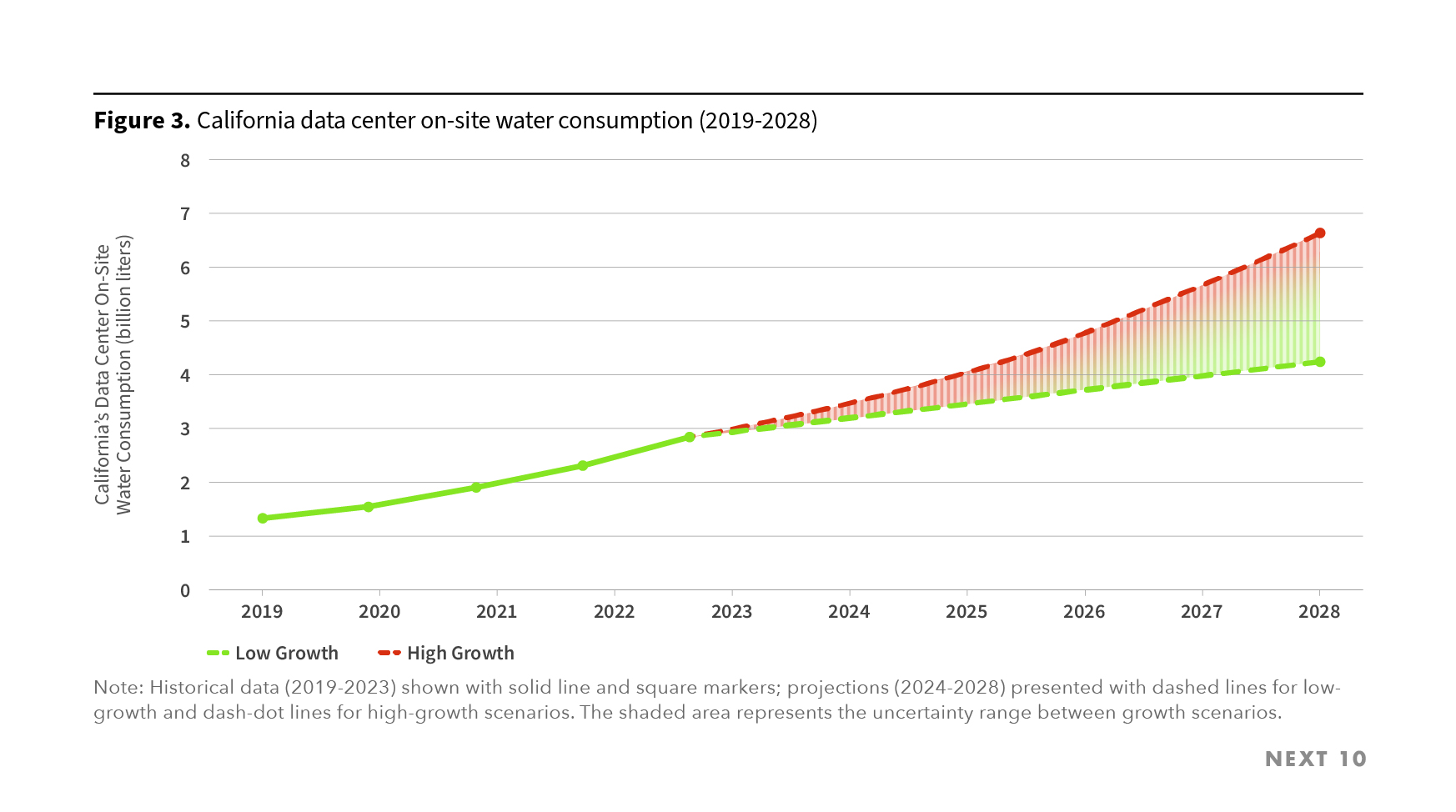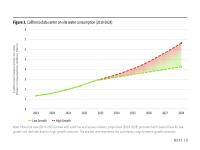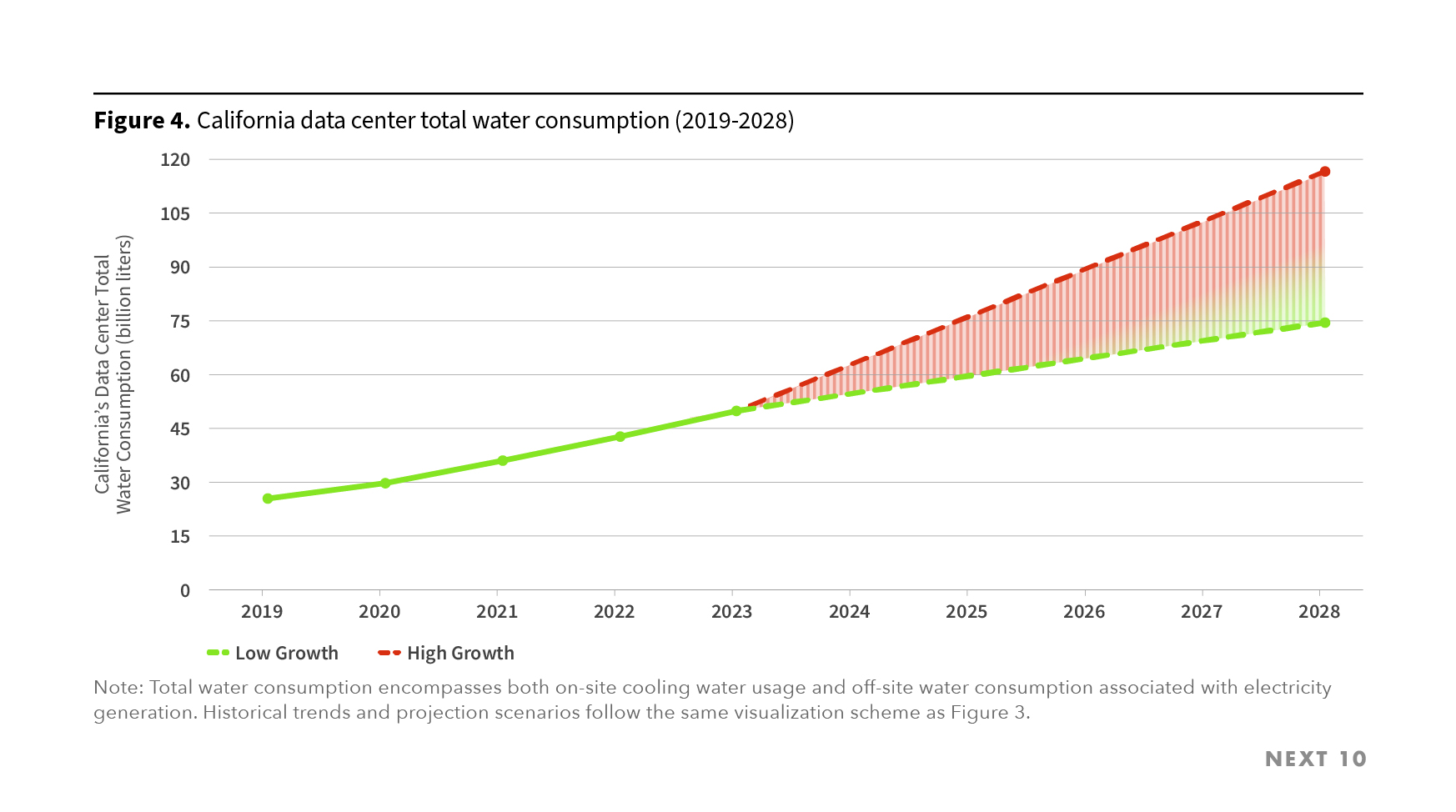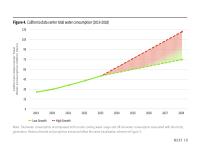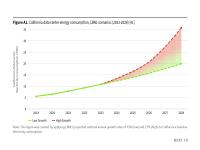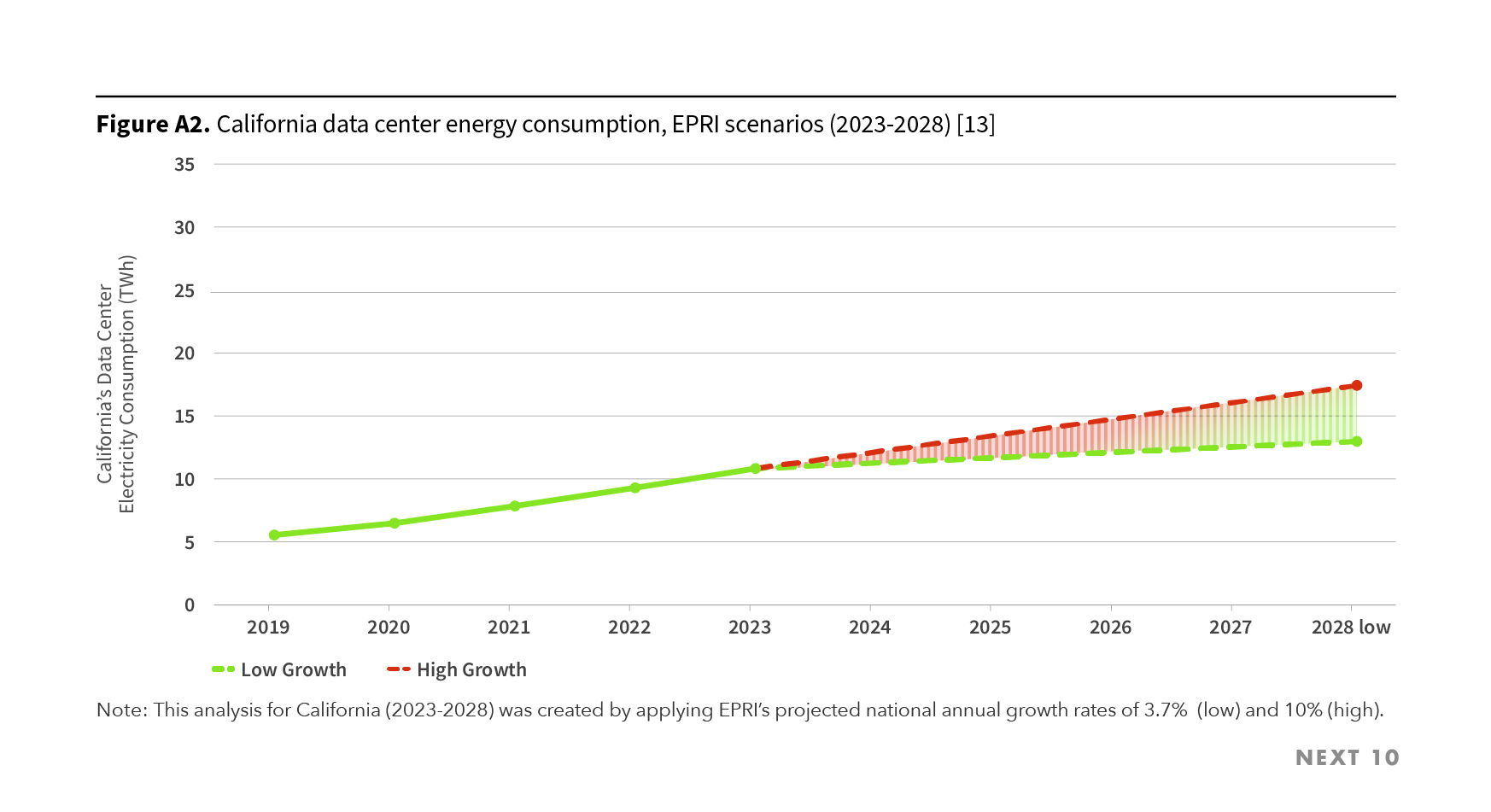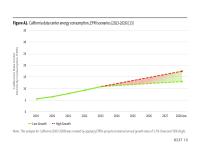Publications
An Assessment of California Data Centers’ Environmental and Public Health Impacts
While data centers have long existed in California, the rise of artificial intelligence (AI) has significantly increased demand for new data centers over the last five years, and the pace is expected to increase through the rest of the decade. This explosive growth has led to a corresponding increase in energy demand which has led to increased electricity consumption, carbon emissions, water usage, and public health costs arising from air pollution.
A new report, authored by researchers from the University of California, Riverside and produced by Next 10, shows that from 2019 to 2023, health costs from California’s data centers tripled. Projections show that they could rise by another 496% above 2019 and 72% above 2023 levels by 2028 unless strong mitigation policies are enacted. This is the first time the public health impacts from onsite diesel backup generators (which are operated regularly for maintenance and potential demand response beyond actual grid outages) and offsite electricity production have been estimated and compiled alongside other impacts for California data centers.
The report finds that between 2019 and 2023, electricity use by California data centers increased by 95%, with projections showing demand could rise as much as 356% above 2019 and 133% above 2023 levels by 2028. At the high end, data centers could consume 25.3 terawatt-hours of electricity annually, equivalent to the annual electricity consumption of 2.4 million average American households. The total water consumption by data centers in California increased from 25.42 billion liters in 2019 to 49.91 billion liters in 2023 — a 96.4% increase, with projections showing demand could rise as much as 358% above 2019 and 133% above 2023 levels by 2028. Carbon emissions from data centers in California almost doubled from 1.24 million short tons in 2019 to 2.38 million in 2023. Data center emissions in the state are projected to span roughly 3.55 to 5.56 million short tons by 2028—an increase of 186% to 348% compared to 2019 and 49% to 133% compared to 2023.
The report notes that California’s electric grid is cleaner than most states, using two-thirds clean energy. However, unless urgent steps are taken—including replacing diesel backup generators with alternative fuel sources paired with battery energy storage systems and placing guardrails on the industry—data centers’ contribution to air pollution could threaten the state’s climate and air quality goals. These findings signal a national challenge in the making, as more states race to host this energy- and water-intensive industry.
Next 10 and UC Riverside will host a webinar on Tuesday, December 2nd at 11am PT where the authors will discuss the key findings from the report and implications for policy. Register here: https://us02web.zoom.us/webinar/register/WN_cxHYvHJ5QiK3H7j2vMMJeg
Next 10 is not the sole owner of rights to this publication. Usage of this content is subject to permissions, please contact us at info@next10.org for more information.
Electricity Consumption
- From 2019 to 2023, the electricity consumption in California data centers increased from 5.54 TWh to 10.82 TWh, almost a 95% increase.
- California’s data center electricity consumption represented 6.13% of the national average in 2023 — behind only Virginia and Texas.
- The projections indicate that electricity consumption by data centers in California could grow to between 16.16 and 25.28 TWh by 2028 — which corresponds to an increase of 191.7% to 356% compared to 2019.
- Unless demand is mitigated, there is an urgent need for improved grid capacity and integration of renewable energy to support sustainable expansion.
Carbon Emissions
- Carbon emissions from data centers in California almost doubled from 1.24 million short tons in 2019 to 2.38 million in 2023.
- Carbon emissions from data centers in the state are projected to span roughly 3.55 to 5.56 million short tons by 2028 — an increase of 186% to 348% compared to 2019.
- The “CA-US Ratio” metric reveals that in 2019 California data centers emitted just 48.43% of the carbon they would have under the national average intensity, highlighting the importance of California’s renewable energy portfolio.
- Even as the grid becomes cleaner, data center operations are making up an ever-larger portion of the state’s total emissions, with the data center share of statewide electricity-related emissions growing steadily from 2.21% in 2019 to 4.52% in 2023.
Water Consumption
- The total water consumption by data centers in California increased from 25.42 billion liters in 2019 to 49.91 billion liters in 2023 — a 96.4% increase.
- On-site water consumption grew from 1.33 billion liters in 2019 to 2.84 billion liters in 2023 — a 113% increase. The year-over-year increases range from 17% to 23%, suggesting a stable relationship between facility expansion and cooling water requirements.
- Off-site water consumption dominates the total operational water footprint, accounting for more than 90% of the total, while demonstrating substantial growth trajectories that nearly double consumption from 2019 to 2023.
- For each TWh of total electricity consumed, California data centers indirectly drive approximately 4.35 billion liters of water consumption through power generation processes.
- Total water consumption by California data centers is projected to range from 74.54 to 116.63 billion liters by 2028, an increase of 193% to 358% compared to 2019.
Health Costs
- From 2019 to 2023, health costs from California’s data centers surged from $44.68 million in 2019 to $155.44 million, more than tripling.
- Scope 2, indirect emissions from fossil fuel power plants that generate electricity, costs remain the dominant contributor.
- Projections indicate that by 2028 the public health costs will further increase to between $167.14 million and $266.57 million, corresponding to an increase of 274% and 496% compared to 2019.
- By 2028, negative health impacts from data center pollution could add approximately 3,900 cases of asthma and 490 lost workdays to California, under the low-growth scenario.
Next 10 cannot grant permission to use graphics from this publication; additional permissions may be required from the copyright holder. Please view our Terms of Use policy for more information or contact Next 10 at info@next10.org with any questions.
